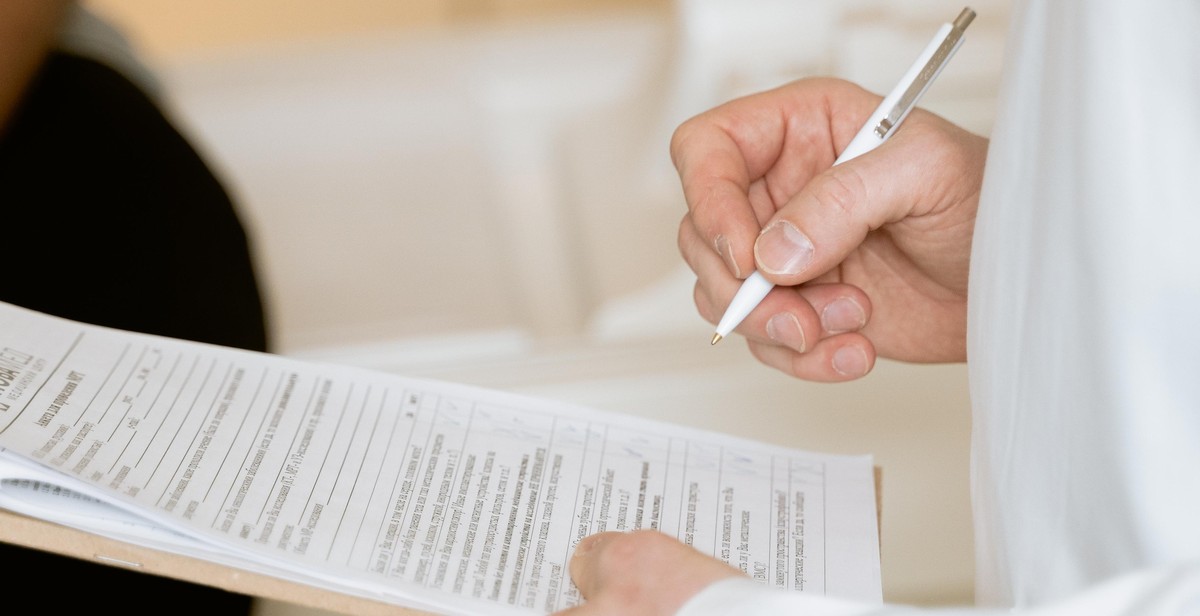What is the Best Age to Start Investing?
Investing is a crucial aspect of building wealth and securing a financially stable future. However, the question of when to start investing can be a daunting one, particularly for young people who are just starting out in their careers. The truth is, age plays a significant role in determining the best time to start investing.
Why Age Matters When Investing
Investing at a young age has numerous advantages. Firstly, it allows you to take advantage of the power of compounding. By starting early, you give your investments more time to grow, which means you can potentially earn more money in the long run. Secondly, investing at a young age enables you to take more risks. Younger people have more time to recover from any losses they may incur, which means they can afford to take on riskier investments with higher potential returns.
On the other hand, investing at an older age requires a different approach. As you get closer to retirement, your investment strategy should shift towards more conservative investments that prioritize capital preservation over growth. This is because you have less time to recover from any losses, and you need to protect your savings to ensure you have enough money to last you through retirement.
So, What is the Best Age to Start Investing?
The best age to start investing is as early as possible. The power of compounding means that the earlier you start, the more time your investments have to grow. However, if you haven’t started investing yet, don’t worry. It’s never too late to start. Even if you’re in your 40s or 50s, you can still benefit from investing, provided you have a solid investment strategy in place.
Ultimately, the best time to start investing is when you’re ready and have the means to do so. Whether you’re just starting out in your career or are approaching retirement, investing is a crucial aspect of securing your financial future.

Investing in Your 20s
Investing in your 20s is one of the smartest financial decisions you can make. It may seem like a daunting task, but starting early has numerous advantages that can set you on the path to a secure financial future.
Advantages of Starting Early
One of the biggest advantages of investing in your 20s is time. The earlier you start investing, the more time your money has to grow. This is because of the power of compounding, which is the process of earning interest on your interest over time. The longer you invest, the more compounding works in your favor.
For example, if you start investing $100 per month at age 20 and earn an average annual return of 8%, you could have over $300,000 by the time you turn 60. However, if you wait until age 30 to start investing, you would have to invest over $300 per month to achieve the same result.
Another advantage of starting early is that you have more time to recover from market downturns. Investing always involves some level of risk, but the longer you invest, the more time you have to ride out market fluctuations and recover from any losses.
Tips for Investing in Your 20s
Here are some tips to help you get started with investing in your 20s:
- Set financial goals: Before you start investing, it’s important to have a clear idea of your financial goals. Do you want to save for a down payment on a house, pay off student loans, or build a retirement nest egg? Knowing your goals will help you determine how much you need to save and invest.
- Start small: You don’t need a lot of money to start investing. In fact, many investment platforms allow you to start with as little as $25 or $50. Starting small allows you to get a feel for investing and learn from your mistakes without risking too much money.
- Diversify your portfolio: Diversification is key to reducing risk in your investment portfolio. This means investing in a mix of stocks, bonds, and other assets to spread out your risk. You can also diversify by investing in different industries or geographic regions.
- Invest in index funds: Index funds are a type of mutual fund that tracks a specific market index, such as the S&P 500. They offer low fees and broad diversification, making them a good choice for novice investors.
- Take advantage of employer-sponsored retirement plans: If your employer offers a 401(k) or similar retirement plan, be sure to take advantage of it. These plans offer tax benefits and often come with employer matching contributions, which can help boost your savings.
Investing in your 20s may seem intimidating, but it’s one of the best things you can do for your financial future. By starting early and following these tips, you can set yourself up for a lifetime of financial security.

Investing in Your 30s
Starting to invest in your 30s can be a challenge, especially if you have not started earlier. However, it is never too late to begin investing, and your 30s can be the perfect time to start building wealth and securing your financial future. Here are some tips for investing in your 30s:
Challenges of Starting Late
One of the biggest challenges of starting to invest in your 30s is that you may have missed out on some of the benefits of starting earlier. For example, if you had started investing in your 20s, you would have had more time to benefit from compound interest, which can significantly increase your returns over time.
Another challenge is that you may have other financial obligations, such as paying off student loans or saving for a down payment on a home. It can be challenging to balance these obligations with investing, but it is essential to make investing a priority if you want to build wealth over time.
Tips for Investing in Your 30s
Here are some tips that can help you get started with investing in your 30s:
- Set financial goals: Before you start investing, it is essential to set financial goals. This can help you determine how much you need to save and invest to achieve your goals. For example, if you want to retire at age 65 with a certain amount of money, you can use a retirement calculator to determine how much you need to save and invest each year to reach that goal.
- Start small: If you are new to investing, it is a good idea to start small. You can begin by investing in low-cost index funds or exchange-traded funds (ETFs) that track the performance of the overall market. These investments can provide you with broad exposure to the market and help you diversify your portfolio.
- Take advantage of employer-sponsored retirement plans: If your employer offers a 401(k) or similar retirement plan, it is essential to take advantage of it. These plans can provide you with tax benefits and employer contributions that can help you build wealth over time.
- Consider a Roth IRA: A Roth IRA is an individual retirement account that allows you to contribute after-tax dollars and withdraw funds tax-free in retirement. This can be an excellent option if you expect your tax rate to be higher in retirement than it is now.
- Stay diversified: It is essential to diversify your portfolio to reduce your risk. You can do this by investing in a mix of stocks, bonds, and other assets. This can help you reduce your risk and potentially increase your returns over time.
Conclusion
Investing in your 30s can be a challenge, but it is never too late to start building wealth and securing your financial future. By setting financial goals, starting small, taking advantage of employer-sponsored retirement plans, considering a Roth IRA, and staying diversified, you can begin building a portfolio that can help you achieve your long-term financial goals.

Investing in Your 40s
Investing in your 40s can be a daunting task, especially if you are just starting out. However, it is never too late to start building your investment portfolio. Here are some strategies and tips to help you catch up and invest wisely in your 40s:
Strategies for Catching Up
If you have not started investing yet or have not invested enough, there are several strategies you can employ to catch up:
- Maximize your retirement contributions: If you have a 401(k) or IRA, make sure you are contributing the maximum amount each year. This will help you catch up on your retirement savings and take advantage of compounding interest.
- Consider a side hustle: If you have extra time outside of your full-time job, consider starting a side hustle to earn additional income to invest. This could be anything from freelancing to starting a small business.
- Pay off high-interest debt: If you have high-interest debt, such as credit card debt, prioritize paying it off before investing. This will help you save money on interest payments and free up more funds for investing in the future.
Tips for Investing in Your 40s
When investing in your 40s, it is important to keep the following tips in mind:
- Diversify your portfolio: Make sure you are not putting all of your eggs in one basket. Diversify your portfolio by investing in a mix of stocks, bonds, and other assets.
- Take calculated risks: While it is important to be cautious with your investments, taking calculated risks can help you achieve higher returns. Consider investing in growth stocks or emerging markets, but do your research before making any decisions.
- Consider hiring a financial advisor: If you are unsure about where to invest or how to build a portfolio, consider hiring a financial advisor to help guide you. They can provide valuable advice on investment strategies and help you achieve your financial goals.
Conclusion
Investing in your 40s can be challenging, but with the right strategies and tips, you can catch up and build a strong investment portfolio. By maximizing your retirement contributions, paying off high-interest debt, and diversifying your portfolio, you can set yourself up for a comfortable retirement. Remember to take calculated risks and consider hiring a financial advisor to help guide you along the way.

Investing in Your 50s and Beyond
Retirement planning is crucial, especially if you are in your 50s or beyond. At this stage, you may have already accumulated some wealth and are thinking about how to make it last throughout your retirement. Here are some tips for investing in your 50s and beyond:
1. Determine Your Retirement Goals
The first step in retirement planning is to determine your retirement goals. You need to think about how much money you will need to live comfortably in retirement and how long you expect to live. This will help you determine how much you need to save and how much risk you can afford to take with your investments.
2. Consider Your Risk Tolerance
As you approach retirement, you may want to start reducing your risk by shifting your investments from stocks to bonds or other fixed-income investments. However, this may not be the best strategy for everyone. You need to consider your risk tolerance and your financial situation before making any investment decisions.
3. Diversify Your Portfolio
Diversification is key to reducing risk in your portfolio. You should consider investing in a mix of stocks, bonds, and other assets to spread your risk across different investments. This can help you weather market downturns and protect your retirement savings.
4. Invest in Tax-Advantaged Accounts
Investing in tax-advantaged accounts such as 401(k)s and IRAs can help you save on taxes and maximize your retirement savings. These accounts offer tax-deferred growth, which means you won’t have to pay taxes on your investment gains until you withdraw the money in retirement.
5. Consider Working with a Financial Advisor
If you are unsure about how to invest your retirement savings, consider working with a financial advisor. A financial advisor can help you develop a retirement plan that meets your goals and risk tolerance. They can also help you manage your investments and adjust your portfolio as needed.
Conclusion
Investing in your 50s and beyond requires careful planning and consideration. By determining your retirement goals, considering your risk tolerance, diversifying your portfolio, investing in tax-advantaged accounts, and working with a financial advisor, you can help ensure that your retirement savings last throughout your retirement.

Conclusion
Investing is a crucial aspect of building wealth and securing your financial future. Regardless of your age, it’s never too late to start investing. However, the best age to start investing is in your 20s or early 30s. This is because you have a longer time horizon to grow your investments and benefit from compound interest.
But if you are already past your 30s or even 40s, don’t worry! You can still benefit from investing. The most important thing is to start as soon as possible and be consistent with your investments.
When it comes to investing, it’s important to have a clear investment plan and to diversify your portfolio. Don’t put all your eggs in one basket, as this can lead to unnecessary risk. Instead, spread your investments across different asset classes such as stocks, bonds, and real estate.
Another important aspect of investing is to stay informed and educate yourself about the financial markets. Keep up with the latest news and trends in the industry and seek advice from professionals if necessary.
Investing is a journey, and it requires patience, discipline, and a long-term perspective. Don’t get discouraged by short-term market fluctuations or setbacks. Stay focused on your goals and keep investing regularly. Over time, your investments will grow, and you’ll be able to achieve your financial objectives.
Remember, it’s never too late to start investing. Whether you are in your 20s, 30s, or 40s, there’s always an opportunity to grow your wealth and secure your financial future. Start investing today and reap the rewards in the years to come.
